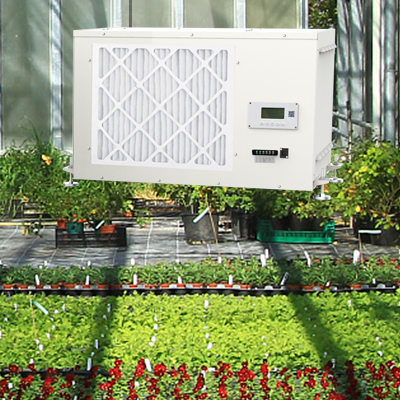To effectively dehumidify your grow room, you can follow these steps:
Choose the right dehumidifier
Select a dehumidifier that suits the size of your grow room and has a capacity appropriate for the level of humidity you need to control. Consider factors such as the dehumidifier's extraction rate (usually measured in pints per day), energy efficiency, noise level, and any additional features you may require.
Position the dehumidifier
Place the dehumidifier in a central location within your grow room, preferably where it can draw in air from different areas. Ensure that there is sufficient space around the grow room dehumidifier for proper air circulation and maintenance access.
Set the desired humidity level
Most commercial dehumidifiers allow you to set a specific target humidity level. Determine the ideal relative humidity (RH) range for your plants based on their growth stage. Generally, it is recommended to maintain RH between 45% and 55% during the vegetative stage and slightly lower, around 40% to 50%, during the flowering stage.
Monitor humidity levels
Use a hygrometer or a digital humidity and temperature monitor to regularly check the humidity levels in your grow room. This will help you determine if adjustments to the dehumidifier settings are necessary.
Adjust dehumidifier settings
Depending on the dehumidifier model, you may be able to control settings such as fan speed, timer, and humidity setpoint. Set the dehumidifier to your desired settings based on the monitored humidity levels. It may take some trial and error to find the optimal settings for your specific setup. Preair produces a series of dehumidifiers for greenhouse, which have many functions, such as, timer, WiFi control, direct drainage.
Ensure proper ventilation
Good air circulation is essential for maintaining a healthy grow room environment. Ensure that your grow room has proper ventilation, including intake and exhaust fans, to facilitate fresh air exchange and prevent stagnant conditions. Ventilation also helps to remove excess heat produced by grow lights and promote transpiration, which can assist in managing humidity.
Empty the water reservoir
If your cultivation dehumidifier collects water in a reservoir, regularly check and empty it to prevent overflow. Some dehumidifiers also offer the option for continuous drainage, allowing you to connect a hose for automatic water removal.
Clean and maintain the dehumidifier
Follow the instructions of the dehumidifier manufacturer for cleaning and maintaining your dehumidifier. Regularly clean or replace filters to ensure optimal performance and prevent the growth of mold or bacteria.
By following these steps, you can effectively dehumidify your grow room and create a suitable environment for healthy plant growth.
Capacity: 230PT/day @80℉/60%RH
Efficiency: 3
Supply voltage: 230V/60HZ
Current draw: 6.7A
Capacity: 330PT/day @80℉/60%RH
Efficiency: 3.5
Supply voltage: 230V/60HZ
Current draw: 8.3A
Post time: May-24-2023




